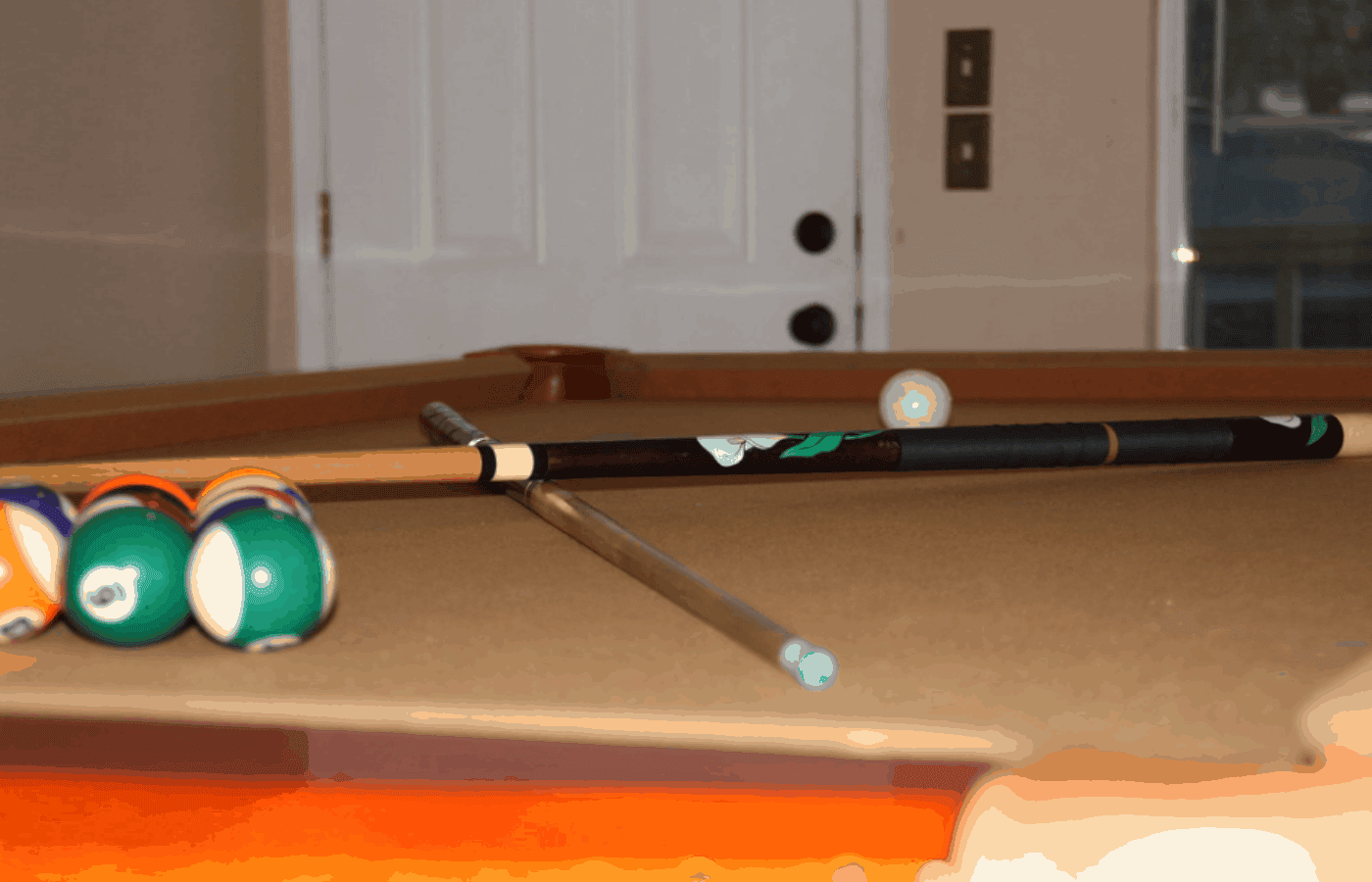As far as pool cues used for billiards and similar games, there are two main types of wood that are used to build them. These two types of wood are ash and maple. Maple is more commonly used for pool cues, especially for American pool, but not exclusively. On the other hand, ash wood cues are often used in other billiards games, such as snooker.
Read on to find out which wood is best for all of your billiards needs, what kind of wood professional pool and snooker players use in their cues, what advantages and disadvantages different cues made of different types of wood have, and more!
What Is the Best Material for a Pool Cue?
There are a few different types of pool, snooker, and billiards cues, not just ash and maple. However, ash and maple are the two most common types, at least as far as wood is concerned. There are some quite popular non-wood or partially wood cues, however, so materials like fiberglass and graphite should be considered as well.
Maple Pool Cue
Maple is generally considered the best wood for American pool. Maple is a denser, harder wood than ash, which allows a more powerful shot. This is especially helpful in pool, as a strong break can really help get a good game going.
The main strength of maple, however, is its durability. Maple is a strong, tough wood that does not warp, bend, or crack easily. Because of this, pool cues made of maple can be used and played with often for many years and be just fine. Proper care and storage are important, but a good wood goes a long way in how durable and long-lasting your cue can be.
Maple is also relatively inexpensive, meaning that production costs for cues, and therefore purchase costs for the consumer, are both kept lower than with more expensive kinds of wood. This is good for people who need to buy a variety of cues.
To check the current price and availability of the Lucasi Custom Mystic Black and Curly Maple Pool Cue, click here to view it on Amazon.
Ash Snooker Cue
Ash is the second most common wood used in cues in billiards games. Although it is not often used in American pool, it is extremely common for other billiards games such as snooker. This is because these games have lighter balls, so the lightweight nature of ash wood is not as much of a problem as it is when hitting the heavier balls in American pool.
Many players feel that ash has a better “feel” or “touch” to it than maple. Its lightweight and less dense nature make it easier to shoot very quickly, which many players think makes them more accurate and powerful.
Some players also appreciate the grain on ash wood. Maple does not have a grain like ash does, and many players use that grain as a reference point to help them aim. Although this is not for everyone, some players swear by it! So perhaps test both out and see which you like more.
To check the current price and availability of the Mark Richard Handmade Ash Snooker Cue, click here to view it on Amazon.
Synthetic Materials
Although all pool cues are made out of wood in some capacity, this doesn’t mean they are all entirely wood. Many cues have carbon fiber, graphite, or fiberglass casings or pieces that make them more durable or lower deflection. This is especially true of high-end billiard cue brands, and many professional-grade pool cues as well.
These materials not only make the cue more durable but also add some weight in the proper places to give the cue better balance and therefore more power. Most cues with carbon fiber, graphite, fiberglass, or other synthetic material in them are still made of maple, ash, or another wood at their core though.
Composite or synthetic materials should be reserved for players with more ability, however. Beginners should stay away. This is because although these cues can give you a ton of power, great aim is absolutely critical, as this extra power can make aiming difficult, especially for newer players. Learning on a normal wooden cue is probably for the best.
What Cues Do Professional Pool Players Use?
Professional pool players almost always tend to lean towards maple. More specifically, most professional-level pool cues are made from straight-grained hard rock maple. Although there are often times other materials to supplement the maple cues (though sometimes not), they are almost always hard rock maple at their core.
The reason for this is the durability, power, and balance that maple gives. In American pool, hitting with power, especially on breaks, is very important. The balls in American pool are much heavier than in other billiards games such as snooker, and therefore a more durable and heavier cue is more suitable for the game.
Professionals usually use maple cues made by high-end cue manufacturers such as Predator, McDermott, Schon, along with many others. These manufacturers exclusively use maple for their American pool cues, as ash cues are too lightweight. This leads to less power and accuracy when hitting heavier American pool balls rather than more lightweight snooker balls, or balls from other billiards games.
Why is Ash Used for Snooker Cues?
The reason ash is used for snooker cues is because of the generally lighter weight of the balls in snooker. This isn’t just the case for snooker, but many other billiards games as well. Ash is generally thought by many players to have a better “feel” or “touch” than maple cues, and the only reason it is not used in American pool as well as the weight and durability factor.
Snooker, however, uses much lighter balls than American pool, as they are smaller than their counterparts. This makes ash a perfect candidate for snooker cues, as it is lightweight and has great feel. Not only that, but the natural spring of the less dense wood gives ash cues great response, making for more accurate shots and better overall play.
Another great bonus ash cues have, even outside of which games they are used for, is that it can be bent back once warped. Unlike maple which is permanently warped, ash can recover from being stored improperly and warped. This makes for longer-lasting cues, though the lack the durability and toughness of maple.
Final Thoughts
So, there you have it. There is a reason there are both ash cues and maple cues. In the vast majority of cases, maple cues are for American pool, while ash cues are for snooker, English pool, and other billiards games with lighter and smaller balls than standard American pool. This is due to maple being a heavier, more durable wood good for hitting heavier balls with power and speed, while ash’s springy and less dense nature makes it great for hitting smaller balls with good touch.
There is also the presence of composite materials added to both types of cues making things a bit more confusing, but that is best to stay away from for beginners. These composite materials, such as graphite and fiberglass, can add a ton of power to your shot and make your game quicker and more accurate, however, this comes with a great increase in difficulty.
Which pool cue you buy depends on which game you mean to play the most. American pool is standard, so maple is probably the safer bet, but if you mean to play snooker or other English billiard games, or just like the lightweight feel of an ash cue, then pick whichever you think would be right for you!



